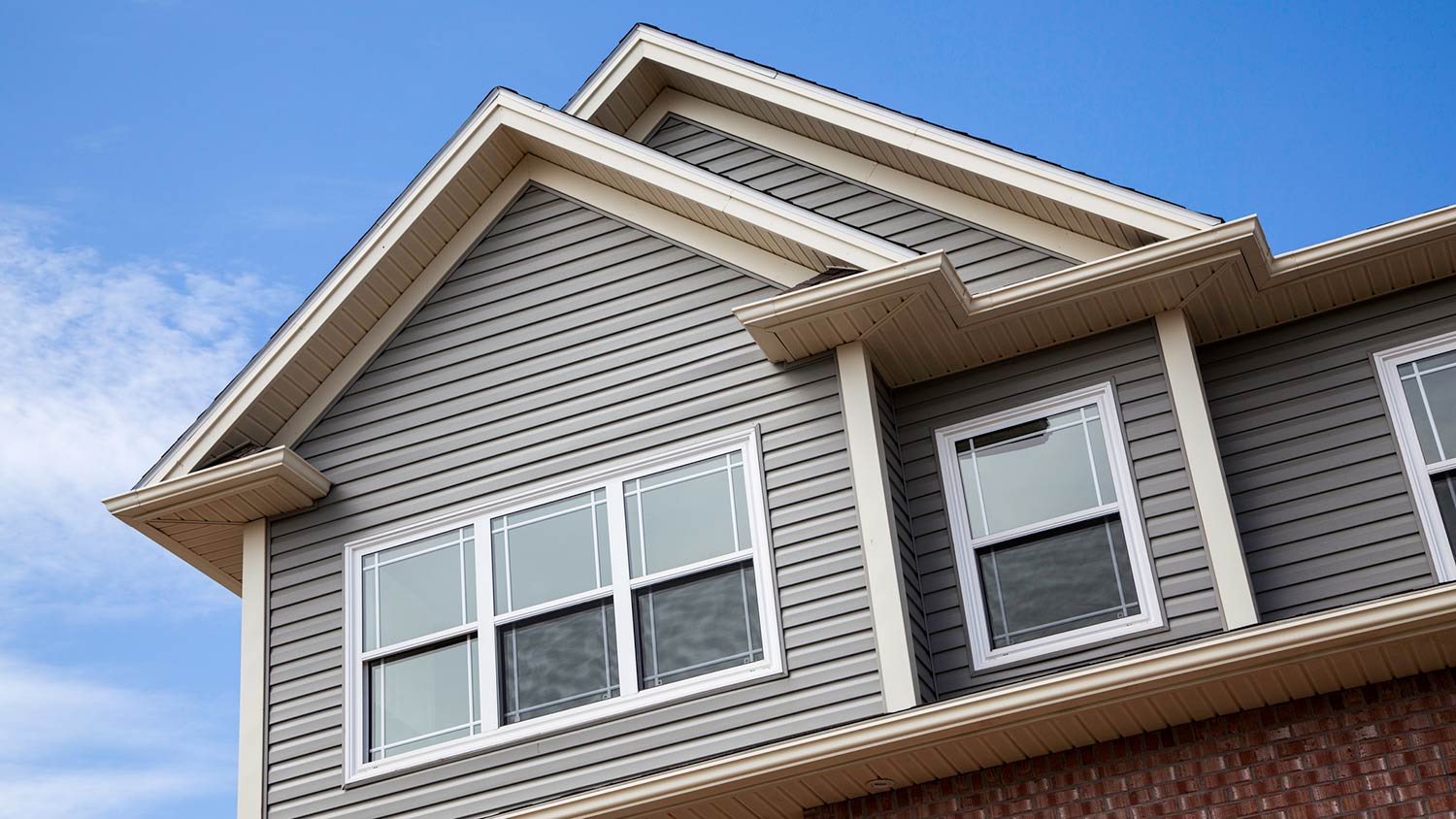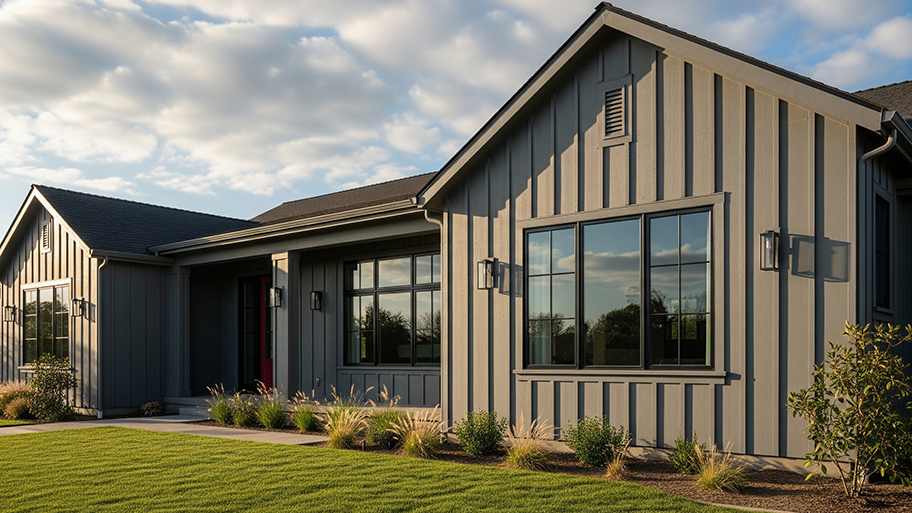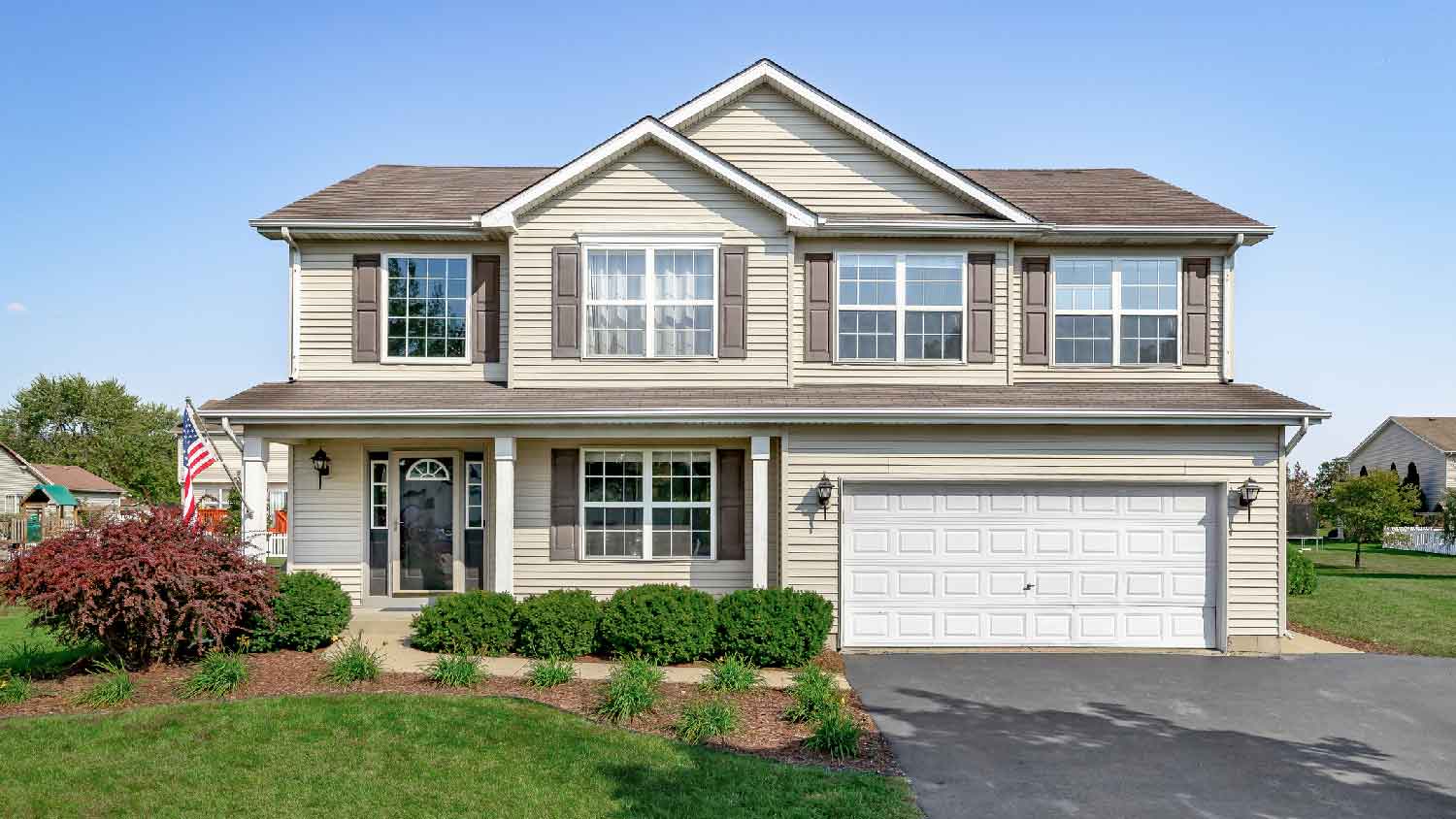
Typical stone siding costs can surpass $100K, but the huge ROI potential may be worth the investment. Get the full cost breakdown of labor and materials here.
It’s about more than just your home’s curb appeal


Warning signs of damaged siding include deteriorating boards, mold or mildew growth, and water stains.
Cracked or rotting siding can cause small problems to become larger ones, especially when pests are involved.
Repairing or replacing siding protects your home and boosts curb appeal.
Siding creates an attractive home exterior, but more importantly, it protects the structure of your home from the elements. It’s important to recognize the early warning signs of damaged siding so that you can call on the pros to make small repairs now rather than be faced with larger and more expensive repairs later.
Consider siding as the protective shell for your home. If the shell becomes damaged, your home’s structure and interior are also at risk of damage from the elements. The sooner siding problems are detected, the easier and less expensive it will be to make repairs.
Here are some common warning signs of damaged siding to look for on your home.

Siding can last for many years, but it doesn’t always age the most gracefully. Depending on the type of siding your home has, it will deteriorate in different ways. For example, wood siding can crack, warp, or rot, leaving your home’s exterior vulnerable to pest infestation.
If you’ve got older siding made from masonite or another wood composite material, you might see the slats start to crack at the edges, where water can easily seep in during rainstorms. Vinyl siding might stay intact for longer, but sunlight will make its color fade over time.
Rusty nails are evidence of water damage, which is bad news for siding. It’s not a good look, either, because rusty water could leave stains as it runs down the side of your house. Loose nails indicate that your siding slats are expanding and contracting, which they can do when the temperature fluctuates.
However, missing nails are worse. If you find nails on the ground next to your house, it means that the siding is actually becoming detached. The slats might hold on for now, but it could be a different story with the next bad storm that blows through your area.
This is a warning sign to look for shortly after your new siding is installed. Caulk is supposed to form a seamless connection between the slats, providing a weatherproof exterior for your home.
But if the new boards look uneven or there’s a distinct separation between two boards, your siding was likely not installed properly. It’s worth a call to a local siding contractor to ask what repairs or adjustments can be made while the work is still under warranty.
We highly recommend having any serious siding damage assessed by a professional: Surface-level siding issues could be tied to anything from structural issues to rot.
Older homes often come with a symphony of sounds—from creaky floorboards to wind whistling through cracks in old windows and doors. But if you’ve recently had your siding redone, you shouldn’t ignore any new popping, creaking, or bumping sounds coming from your home’s exterior. If you do hear them, it could mean that your siding was installed too tightly and needs to be fixed to allow for normal contractions and expansions over time.
If you have wood siding, you need to be on alert for termites and other insects that will literally eat their way through the exterior of your home. But that doesn’t mean homes with vinyl or aluminum siding are free from pest problems.
Any type of siding that deteriorates over time can provide entryways for other insects and even rodents to get into your home. In addition to calling a siding professional for repairs, call a pest control pro to cover your bases.
It can be unnerving when water appears where it doesn’t belong in your home. If you see water stains on your interior walls and there’s no evidence of a flood or leaky pipe, your siding might be to blame.
As long as it’s safe to do so, inspect the siding right outside of where the water stains are. If you see holes or other signs of deterioration in the siding, that’s where the moisture is seeping in.
Mold and mildew growth on any surface isn’t a good sign, least of all on siding. If there’s any on your home’s exterior, it means moisture has penetrated the siding.
If the siding is otherwise intact, it might just be that you need a good power washing to clean the mold and mildew off. However, if there’s mold or mildew growth on rotting siding, it could mean that the water damage is more extensive than meets the eye.
Siding provides insulation for your home. If your energy bills are creeping higher, it could be because the warm/cool air is escaping through the walls and siding.
This could be the case if you’ve got older siding, which is not as energy-efficient as the siding manufactured today. It’s worth consulting a siding contractor to learn about either adding insulation or replacing the siding entirely.

If you have experience using a power washer, you might feel confident enough to DIY cleaning your siding. The same goes for hammering a loose nail in an otherwise intact section of siding. But if you spot large sections of rotting or deteriorating siding, it’s best to call a pro to do the work quickly and efficiently.
If you feel confident in your DIY skills and can easily—and safely—access the damaged section of siding, then you might consider proceeding with the repair or replacement work on your own. Keep in mind, though, that proper siding installation protects your home’s exterior and structure, so it’s worth it for your peace of mind to hire an experienced siding pro to do the work instead.
Siding isn’t meant to last forever, but newer, more energy-efficient vinyl and composite siding can last for many years. Still, you can be proactive in protecting your investment. Here are some tasks to add to your to-do list:
Inspect your home’s exterior: At least twice a year, walk the perimeter of your home and look for siding damage. You might want to add another inspection after a particularly bad storm or stretch of wet or windy weather.
Make small repairs as needed: A small crack or gap in your siding doesn’t necessarily mean disaster if you get it taken care of quickly.
Clean gutters: Clear gutters allow rain to drain away from the roof and exterior of your home, avoiding water damage.
Trim greenery: Keeping your garden and yard neat allows for better airflow for your home’s exterior. It also prevents animals and pests from nesting near your home and potentially damaging your siding.
Power wash the exterior: Siding gets dirty when exposed to the elements, and mold and mildew can grow even if the siding is not damaged itself. A good power washing once a year boosts curb appeal and protects your home.
Pressure washing can be dangerous and damage your property if not done correctly. We highly recommend hiring a pro to ensure the job is completed safely and correctly.
Siding replacement costs $11,500 on average for materials and installation, with most project prices landing between $5,600 and $17,800.
Your actual project costs will be determined by local labor rates and the siding materials you choose. Here are some common options and prices for siding:
Aluminum: $2–$5 per square foot
Vinyl or engineered wood: $3–$12 per square foot
Premium siding: $30+ per square foot
It’s worth it to discuss the best options for your home with a siding replacement professional. Although it’s not inexpensive to replace the siding on your entire home, it could save you money and headaches down the line.
From average costs to expert advice, get all the answers you need to get your job done.

Typical stone siding costs can surpass $100K, but the huge ROI potential may be worth the investment. Get the full cost breakdown of labor and materials here.

The stone veneer siding cost you’ll pay depends significantly on materials and local labor costs. Learn more about factors that affect the project’s cost.

How much does board and batten siding cost? Our cost guide breaks down material and labor costs and offers tips to save money on your new siding.

Determining how much EIFS costs per square foot is the key to predicting your bottom line when replacing or installing this long-lasting home cladding option.

When installing siding, you may find rotted boards underneath the old siding. Siding is your home’s first line of defense against the elements–rot causes damage that can spread, so learn about what to do when you discover rotted boards.

Knowing how many pieces of siding are in a square can help ensure you order the right amount of siding for a smooth, problem-free installation.